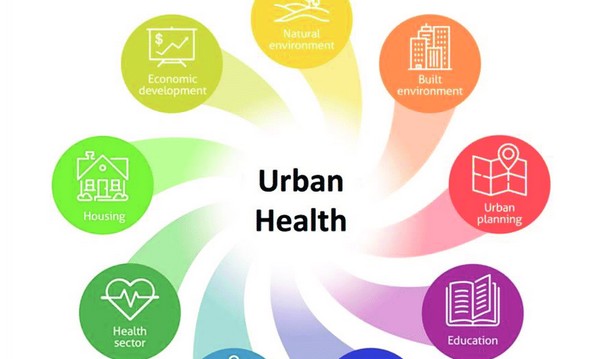Nutritious food, clean clothing, and housing are the desirable requirements to keep human functionality and life and urban health smoothly active. The present era is the era of mechanization. Whatever the dimensions of industrialization, all are dependent on the machine. Still, to maintain the functionality of these machines or to develop favorable conditions, workers need a balanced and nutritious diet.

Several 9 Facts About Urban Health – Let’s see one by one:
1. Poverty
Poor, unemployed, daily-wage laborers, all people of that class who are unable to provide two-time meals to their family even after working hard. As a result, their children become malnourished. It is a huge reason due to which it is becoming difficult to live in cities.
2. Housing Problem In Cities
The land is limited in cities, and demand is high. An ordinary person cannot buy a house in a city. Millions of workers whose resources and income are limited forced to live in slums. Small children live in tight spaces with their families. As a result, after diarrhea, measles, etc., the body becomes weak and goes into a state of malnutrition.
3. Population Pressure
Land does not increase with an increasing population. Consequently, people are running from villages to cities in search of employment. Where he has to face all the problems in place of relief. Keeping these problems in mind, nowadays people are going to cities less.
4. Industrial Revolution
The industrial revolution has an essential role in the production of slums. There are many options for livelihood in the industrial town. Millions of rural people come here thinking of earning more and more money, but they feel disappointed here. Some people have to live on a pile of filth and due to which they get sick quickly. This factor also affects the health of the urban people.
5. Lack Of Education And Awareness
Lack of education and awareness has increased the growth of slums. Those people who are victims of poverty are also unaware of the mess of slums. Due to which a large number of people become ill, and some severe diseases surround them.
6. Social Evils
Facilities in the slum area are nominal, while infections and social evils are unlimited, yet people move here because they have to pay very little rent. Due to illiteracy and social evils, people are not aware of the method of preserving the nutritious elements of food.
7. Increased Mobility
The industrial revolution and traffic facilities stimulated the person to find work and do a job in cities. People go from one village to another from one town to another and from city to metropolis in search of work. They go to the shelter; in this way, the development of slums is continuously increasing.
8. A Tendency To Exploit
Workers, an essential part of the production, live in slums. The hungry person worries about feeding his family. Eventually, the poor go to the slums to remain exploited laborers.
9. Rural Unemployment
Indian village where a person gets work for a few months in a year, and the rest of the month, they suffer from the curse of unemployment. There is no such system in the rural health problems in urban areas that one can get work in free time.
Conclusion
While urbanization and industrialization improve the economic condition of the individual. On the other hand, it has given rise to the problem of unemployment on a large scale. The unemployed have been forced to defy social order and values to fulfill their needs, due to which the social system has changed, and social bonds have started to weaken
